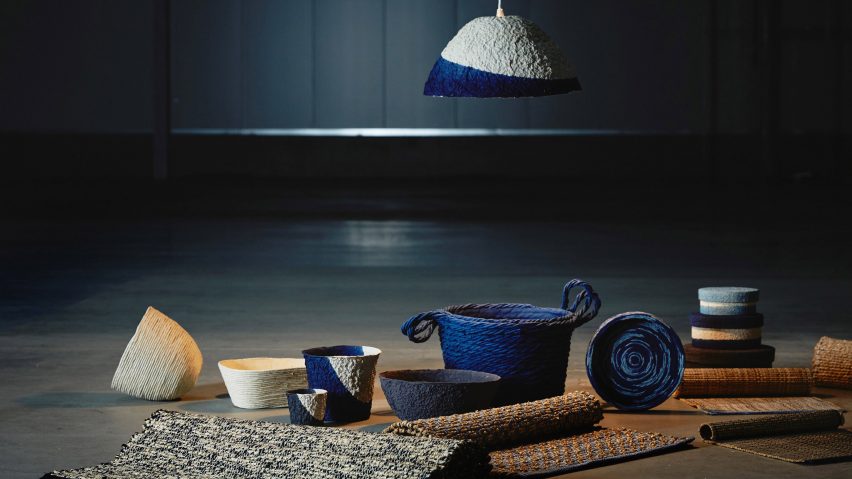IKEA will launch a collection of home accessories made from rice straw that would otherwise be burnt by India's farmers and pollute the air.
Called Förändring, which means change in Swedish, the homeware collection comprises around 15 lampshades, vessels and mats made using a variety of techniques that use up leftover rice straw.
Once rice is harvested in India, the straw is commonly burnt by small-scale rural farmers to make way for the the new crop.
This smoke contributes to the smog peaks that causes numerous health problems for the population of northern India, where nine out of 10 of the world's most polluted cities are situated.
Instead, IKEA is collaborating with rice straw collectors to make products with the Swedish company's existing suppliers in the region. The project was unveiled today as part of this year's Democratic Design Days, IKEA's annual conference, at the company's headquarters in Älmhult, Sweden.
"This is a completely new material for IKEA," explained Helene Davidsson, IKEA sustainability manager in south Asia.
"We work with small-scale farmers and local authorities to see how we can change habits and make a positive change, to stop burning and instead show that we can take care of it by collecting the straw and making these products," she told Dezeen.
Akanksha Deo, an IKEA product designer based in India, worked with suppliers on two methods of using the rice straw waste.
Her lampshades and vessels are made from a pulp that is a mix of rice straw and fabric waste, while for the mats and rugs the lengths of straw are twisted into a cord to be woven. The mats come in three different sizes.
"We wanted to create a fun family of rugs, not just with a different visual expression, but also to experiment with different constructions and structures," said Deo to Dezeen.
The designer used cotton for the warp of the larger rug, in a gradient of blues from light to dark across its surface. Cotton has been woven into the rice straw cord for some of the smaller rugs to make them more durable and comfortable underfoot.
For the shades and vessels, 60 per cent straw pulp is combined with 40 per cent cotton pulp from recycled cotton waste, for a sturdy material base.
The pieces are then moulded and dip-dyed by hand.
"There's no industrial process for it right now. So the whole idea is that when a person dips the vessel, each will be slightly different and unique," said Deo. "And it's actually made by a person, so that's the beautiful part of these kind of products."
Förändring forms part of IKEA's Better Air Now initiative. The brand hopes the replicate the project in other parts of India and across the world in regions that practise crop burning to get rid of harvest residue.
"We want to see how this can be replicated, as there are crop burnings taking place around the world, so we want to see what else we can do with natural fibres," said Davidsson.
IKEA also announced today that it has partnered with the Climate and Clean Air coalition (CCAC) to further its clean air projects.
CCAC is a voluntary partnership of governments, businesses and institutions aiming to improve air quality through reducing short-lived climate pollutants. In the agriculture sector this might be methane recovery or crop residue removal, such as the rice straw collected for these products.
Förändring products will be available in selected IKEA markets around the world from autumn 2019.
IKEA has also produced the Gunrid curtain with a photocatalyst mineral-based surface that purifies the air within the home, by breaking down pollutants when they come into contact with light.

